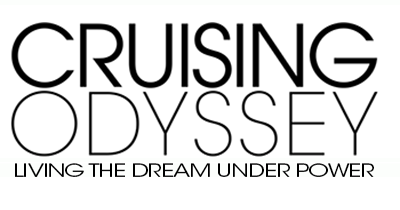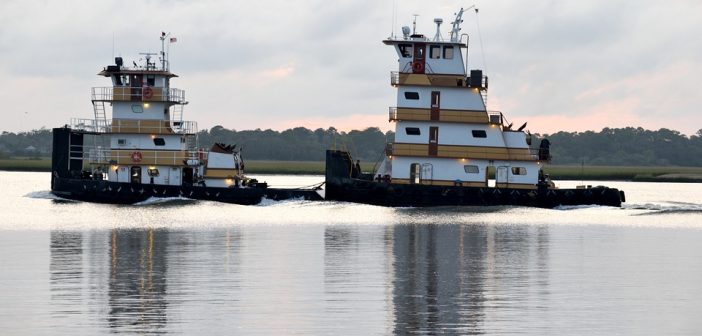Now that boating season is (almost) here, at least for those of us in the north, it’s a good time for a quick review of sound signals – the signals that will help you keep safe on your cruises this summer.
We all need a refresher course now and then. The basic sound signals for powerboats are easy to remember. They will help you stay out of trouble in passing situations on the open water and particularly on the narrow waterways that you’ll find on many stretches of the ICW and the Great Loop, among other places. They are particularly important when you’re sharing those waterways not only with other recreational boats, but also with large commercial tugs and barges that have very limited ability to maneuver.
You can make your life easy in such situations by picking up your VHF and calling the other vessel to make sure you both know how to proceed. Many years ago, for example, the late Dan Fales and I were bringing a big Bertram up from Florida to Connecticut, and we came up behind a very slow-moving tug somewhere in a narrow portion of the waterway in South Carolina.
Reading the name of the tug off its transom, Dan called the captain and asked him how he wanted us to proceed. “Two bells, skipper,” a rather grizzled voice replied. And we proceeded to swing our bow to port and then pass him on our starboard side, just as you would pass a slower car on the highway. But it helps if you know what two bells means.
Here’s a basic guide to the sound signals, to help you maneuver in normal passing situations:
One short blast (about one-second long): I intend to leave you on my port side. This most often applies to the conventional situation of two boats moving toward each other, each staying on the right side of the waterway as they pass.
Two short blasts: I intend to leave you on my starboard side. (See the passing example above.)
Three short blasts: The boat is operating in astern propulsion. (Usually backing, but not necessarily.)
Five or more short blasts: Danger.
One prolonged blast (four to six seconds): The vessel is leaving a dock or berth or a side canal into a river or waterway, or approaching a bend where the captain can’t see vessels coming from the other direction.
Upon hearing a sound signal in a passing situation, the second boat will reply with the same signal, if the captain agrees with the maneuver. If the captain disagrees, or has any question, he must sound the danger signal of at least five short blasts. You cannot answer a signal with a different signal, replying to a one-blast signal with a two-blast signal, for example. This is a cross-blast situation and only causes confusion. If you are confused, you should stop and reassess the situation; you should not attempt to pass until the proper signals have been given and received.
In times of reduced restricted visibility, one prolonged blast (at intervals of not more than two minutes) is used by a powerboat underway.
One prolonged blast with two short blasts (at intervals of not more than two minutes) is used by sailing vessels underway. Read more:
https://www.boat-ed.com/pennsylvania/studyGuide/Communicating-With-Sound-Signals/101039_101039081/




